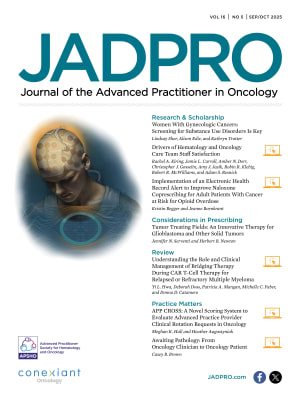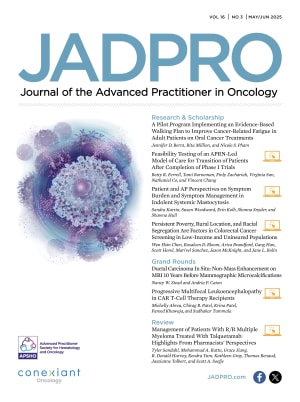Abstract
Background: Updated American Society of Clinical Oncology (ASCO) and National Comprehensive Cancer Network (NCCN) antiemetic guidelines recommend olanzapine for the prophylactic treatment of chemotherapy-induced nausea and vomiting (CINV) in highly emetogenic chemotherapy (HEC). Inadequate treatment of CINV can result in compounding physical sequelae, ultimately affecting patients’ tolerance and recovery throughout chemotherapy treatment. Regional Michigan Oncology Quality Consortium (MOQC) data have identified a wide range of compliance rates in the appropriate prescribing of olanzapine. Literature has shown that olanzapine is safe and effective for the treatment of acute and delayed CINV. Purpose: The purpose of this quality improvement (QI) project was to improve the compliance rate of appropriate prescribing of olanzapine for CINV for adult patients receiving HEC within the project site’s outpatient oncology clinic. Methods/Procedures: The project was based on the Plan-Do-Study-Act (PDSA) model and implemented in an outpatient oncology clinic in a Midwestern urban area over a 6-month time period. A multidisciplinary and interactive education program was delivered to providers. Pre- and post-intervention data were collected by impartial, independent auditors. At monthly provider staff meetings, a presentation was provided to prescribers supplying information on the updated antiemetic guideline recommendations and the pharmacodynamics of olanzapine. An olanzapine frequently asked questions (FAQ) sheet was also provided to reinforce the reviewed material. Results: Data collected following implementation showed an increase in appropriate prescribing of olanzapine from 82.05% to 94.74% (n = 76). A standard deviation Z-test for two population proportions showed the positive change in compliance rate was statistically significant at p < .05 where p was calculated at .02852. A sustainability audit 1 year after completion showed the rate of appropriate prescribing of olanzapine at 92.59% (n = 27), representing a decrease of 2.15 percentage points. A standard deviation Z-test demonstrated the decrease in comparative compliance rates was not statistically significant at p < .05. Conclusion/Interpretations: Audit data obtained following the implementation of the QI project revealed a statistically significant improvement, which supported the hypothesis that providing education based on the PDSA model is an effective method to improve the compliance rate of appropriate olanzapine prescribing for CINV in patients receiving HEC. The result reflects the growing body of evidence confirming the validity of the PDSA model.







